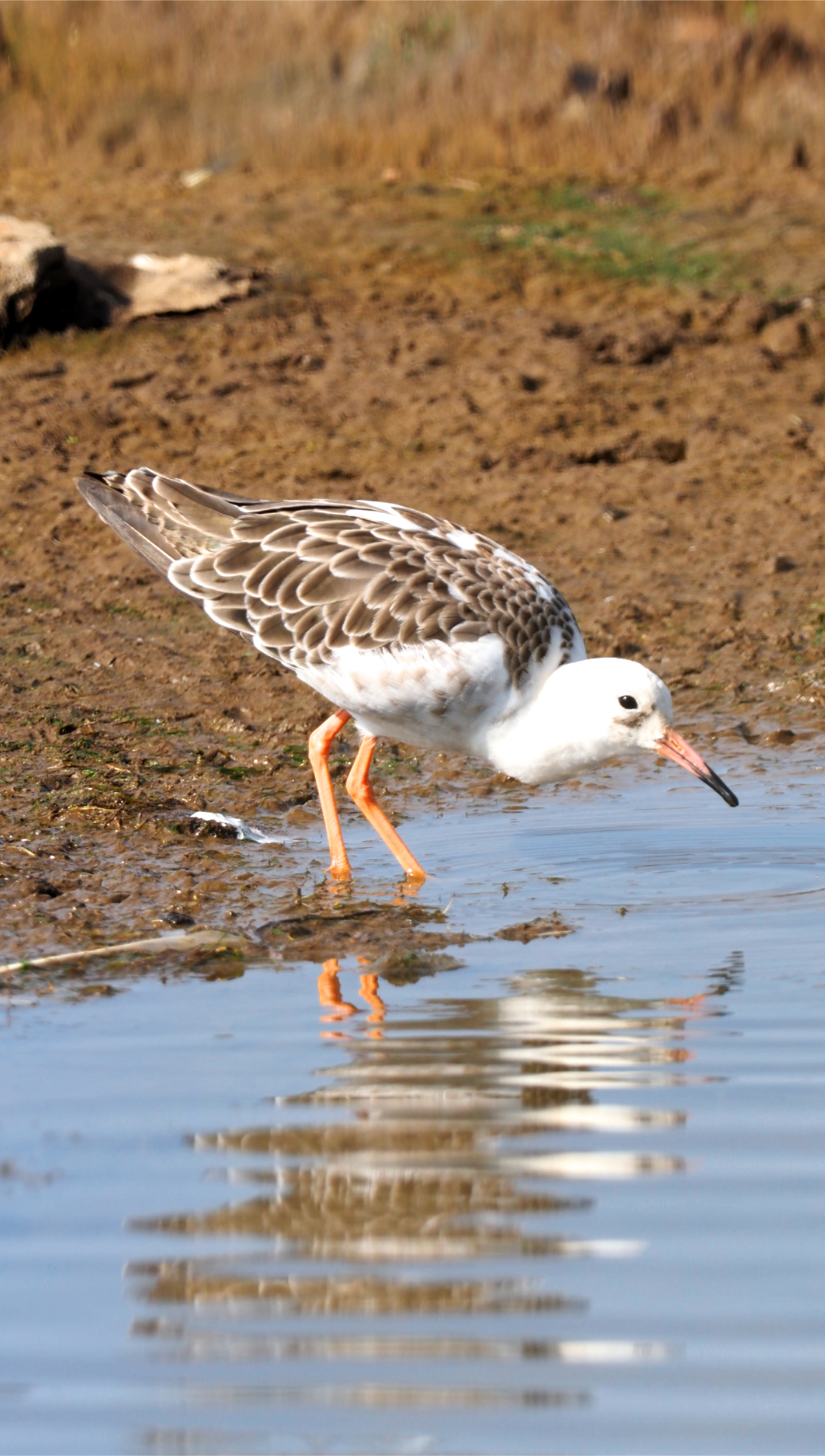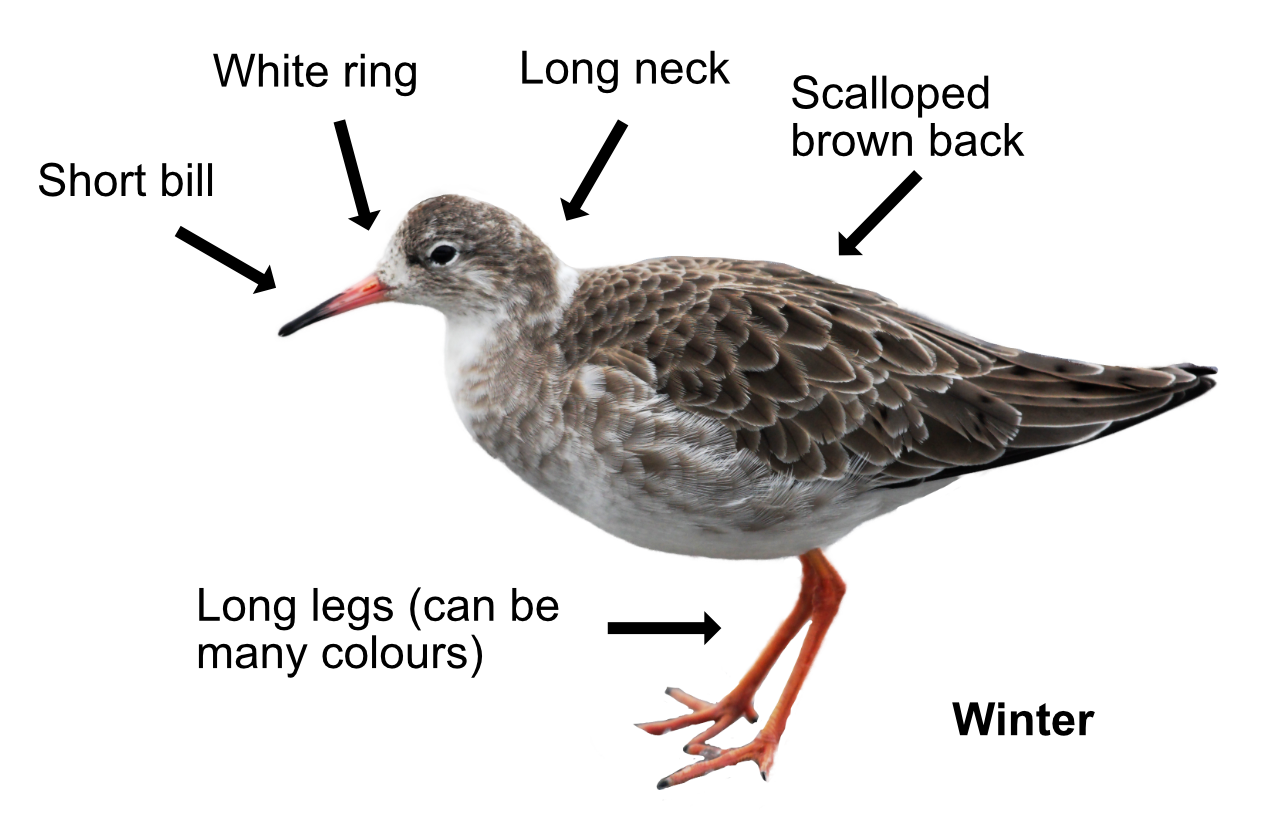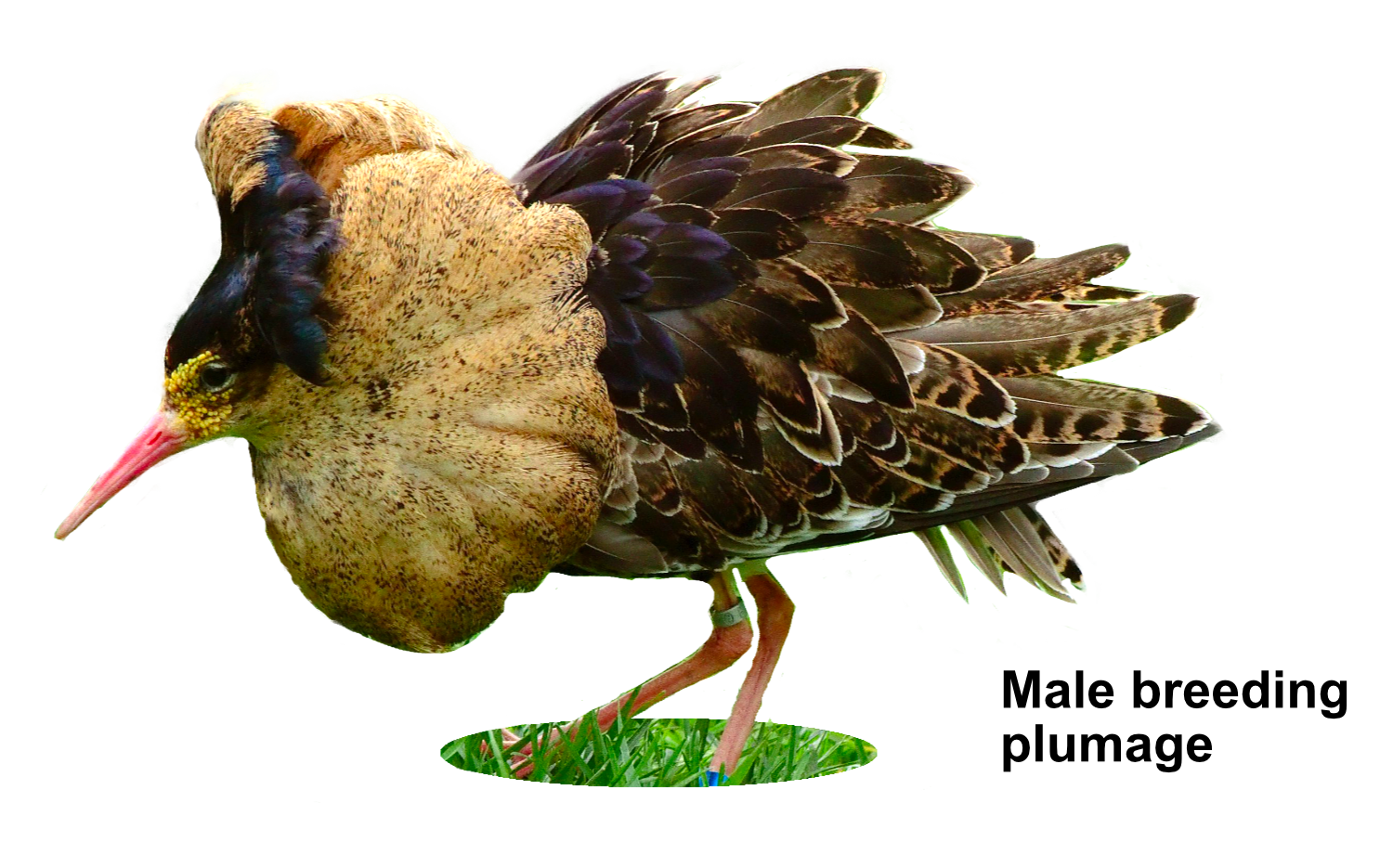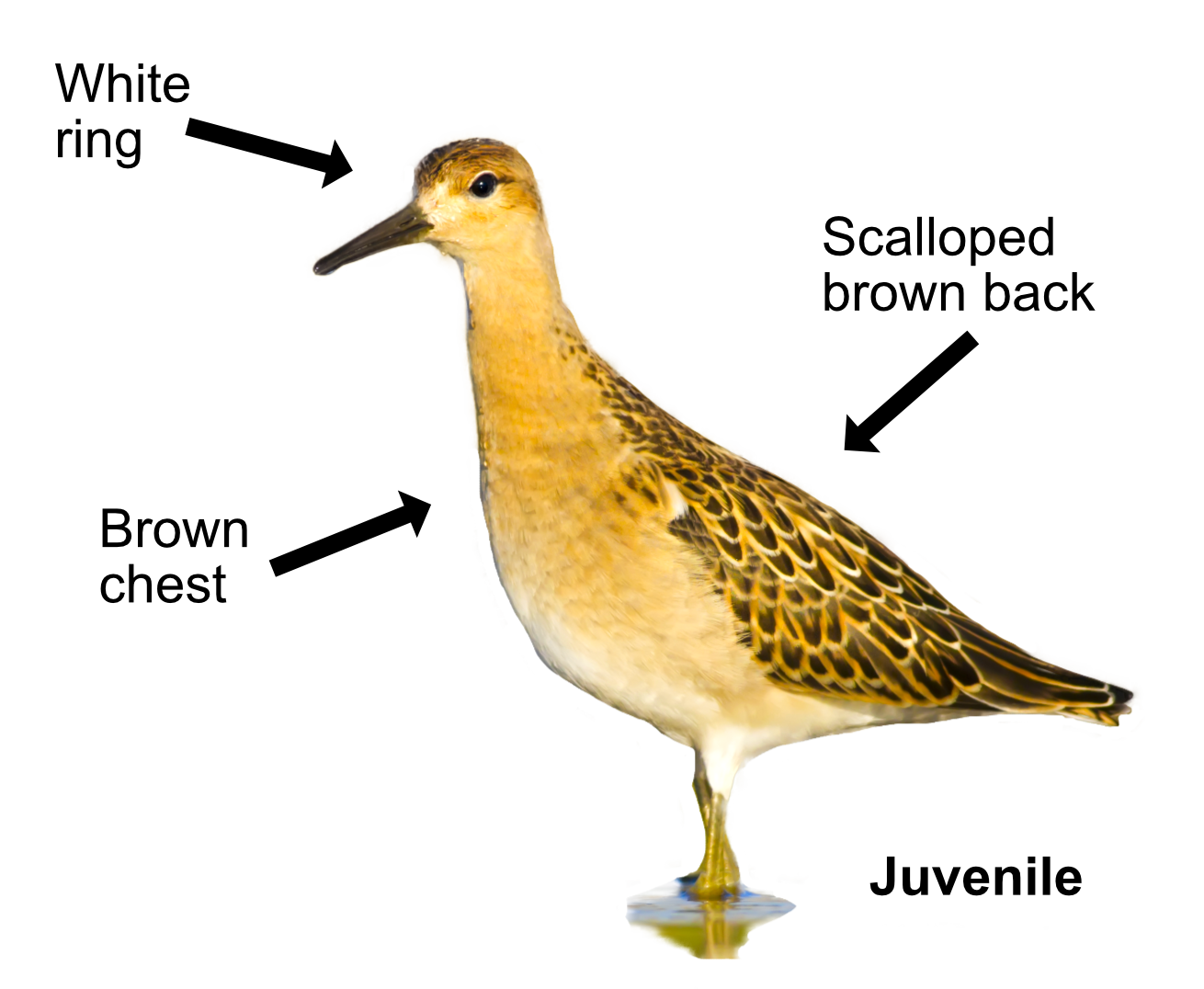
The Ruff, even more than the Dunlin, is a confusing wader of many colours and plumages. It is mainly a summer visitor to marshes and wetlands, though a few now stay here. Long ago, Ruffs were trapped for food in large numbers. On one occasion, 2,400 were served at Archbishop Neville's enthronement banquet in 1465. The heavy toll on breeding birds, together with loss of habitat through drainage, meant Ruffs almost became extinct in England by the 1880s. Thankfully, they are now slowly recovering.

It is a medium-sized wader with a long neck and legs, a small head and a relatively short bill. There is often a white ring at the base of the bill. The distinctive feature in all their varieties is a heavily scalloped, brown back. The male ruff in breeding plumage has an exotic black or white 'ruff' and white underparts with large black spots. When not in breeding plumage it is has a blotchy buff breast and white belly. Their legs can be anything from orange to dark green. The female is similar but smaller and the juvenile is like the female but has a cleaner buff breast. In autumn and spring, they can be any mix of the two! In flight, Ruffs show a narrow white wing bar and oval patches on either side of the tail. They look long winged with their loose, lazy flapping. They are generally silent but can make a low "tu-wit" when disturbed.

Ruffs forage on wet grassland and soft mud, mainly searching by sight for edible items. They feed on insects, larvae and small shellfish that they pick from the surface (which is why they don't need particularly long bills). They will also eat plant material when on migration and hungry in the winter.
Male Ruffs return to their breeding ground in mid-March and assemble a display area called a 'lek'. The females, called 'reeves', arrive a few weeks later as the males start their 'lekking' by prancing about in their fancy breeding plumage and sometimes having mock battles with other males. The ones with darker ruffs are the most fancied and the female mates with the most successful 'lekking' male. Males with white ruffs are known as 'satellites' and are not usually dominant enough to mate, but will sneak in and couple with a female when the dark ruffed males aren't looking. All the prancing about in the same spot is what made them so easy to catch and eat.

The nest is a shallow scrape on the ground into which 4 eggs are laid that hatch after 20 days. The youngsters leave the nest soon after hatching. Mum does all the child rearing as dad doesn't want to get his fancy feathers dirty and is too busy doing his moult. She feeds the chicks for the first few days, after which they can feed themselves and can fly 25 days later. Dad leaves to go back to Africa in late June and mum and the kids follow on in July.
The Ruff is specially protected as they were nearly extinct and have slowly been recovering since the 1960s, mainly through the management of bird reserves. Fewer than ten pairs nest here each year. They are mainly here in the summer, though about 800 now remain over winter.
Their Latin name is 'calidris pugnax' where 'calidris' comes from the Ancient Greek 'kalidris' for a grey-coloured waterside bird and 'pugnax' refers to the aggressive behaviour of the bird in its 'lek' from the Latin 'pugnax' for 'combat'. The English name 'Ruff' was first recorded in 1634, and is from the exaggerated frilly collar fashionable with the Elizabethans called ‘a ruff’.